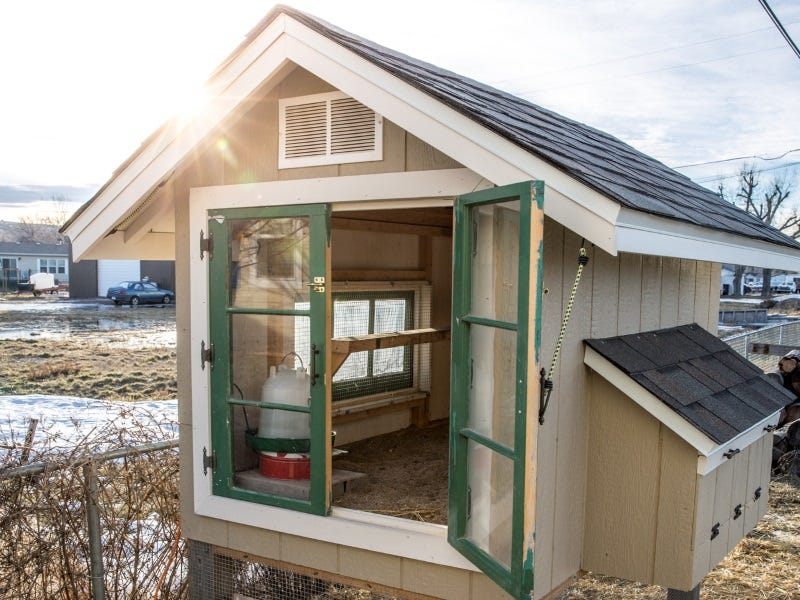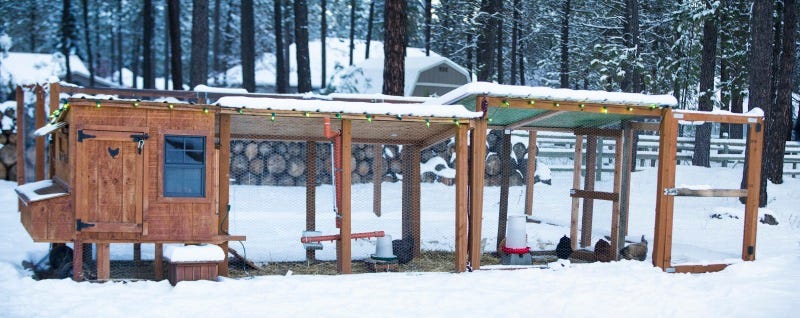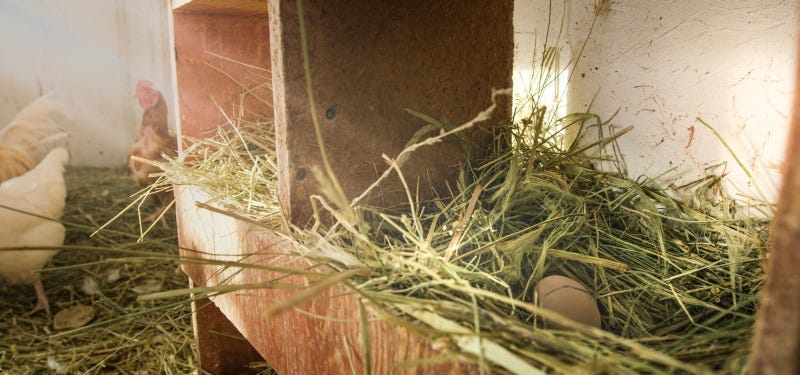What To Consider When Building A Chicken Coop


If you do a quick search on Pinterest, you will see some pretty extravagant chicken coops. That could either inspire you to build a similar structure, or totally overwhelm you. Whether you’re envisioning a coop that is practical, pretty, prefab, or all of these, here are some basic rules to follow. And don’t worry—your flock won’t be green with envy if the neighbors get a cute coop and you just have the basics.
1) Space
Chickens like their space. In fact, it takes four square feet per bird to keep your flock happy and healthy. Without enough space, disease, bickering, broken eggs and other troubles may come your way. This measurement does not include the run, as your birds need enough space to move around while locked in the coop at night or on poor weather days. If you notice your chickens starting to look ragged, notice an increase in fighting, dirty or broken eggs, or a decrease in production, it could be a space problem.
2) Nesting boxes
Your coop should also include comfortable, secluded nesting boxes. These can be purchased or homemade. Just remember to have a few for birds to choose from. The more nesting boxes, the better, but no more than three or four per bird. The standard size of a nesting box is roughly one foot deep, wide, and tall. If you have a larger breed of bird you might consider a larger nesting box; if you have a smaller breed, you could go a little smaller. Repurposed materials also can make great nesting boxes. Milk crates, small barrels, even empty cat litter pails make great places to lay eggs. Just be sure they are clean and bedded with wood shavings or straw before adding them to your coop. Think cozy and clean when it comes to nest boxes. Nest boxes should always be elevated above the ground. Chickens typically lay eggs in a place that seems safe from predators.

3) Roosting
Roosting is a classic example of a bird’s innate desire to stay safe. Birds naturally seek shelter above the ground so they are not directly in reach of ground-dwelling predators. Roosts shouldn’t be confused with nesting boxes—roosts are solely for nighttime rest and shelter. When a bird has no choice but to roost in a nest box, the nest box will likely become very dirty with droppings. That makes the nesting box not ideal for safe storage of eggs.
Roosts can be made from a solid branch; a smooth, thick dowel; or just a wooden board. Roosts at different heights are appreciated by flocks, too. The bird that roosts highest typically is at the top of the social hierarchy. Just be sure the roost can handle the weight of a few birds, as they also like to roost near each other.

4) A good door
A good door is one of the most underrated parts of a coop. The door should not only be sturdy, but also lock. The primary purposes of the door is to let chickens in and out of the coop and allow access to the run or to free-range. The door also keeps the flock safe from predators. The coop door, or a second door, may also be used for you to go in and out of the coop. A good latch or lock is a must—you would be surprised how many poultry owners have stories of raccoons opening somewhat sophisticated door latches. Having a lock on the inside can be beneficial, too. When working inside the coop, you can latch the door so your pet canine doesn’t join in on the fun. And, your birds can’t escape.
Should you let your flock come in and out of the coop as they please, an automatic coop door can be considered. Some of these work on a time schedule or by solar power. Automatic coop doors can be a very helpful “splurge.” Want to see some of the most innovative coops in the Northwest?
5) Lighting
To light or not to light. That is the question. Choosing to offer supplemental light to your coop can provide eggs year round. If you don’t light your cop, your hens likely will not lay eggs during winter. To do this, provide a regular 25 or 40-watt bulb at a safe distance from all bedding. And keep it clear of birds and their feathers, too. Your birds need to be more than 20 weeks old for this lighting. Fourteen to 16 hours per day of light is the targeted length. That amount supports egg production. Using a timer to turn lights on abruptly in the morning allows birds to gradually “go to sleep” with the sunset at night. Sudden darkness can cause “coop drama.” Do note, however, that adding supplemental lighting and keeping chickens laying all year decreases the number of years they lay and their overall lifespan.

Standard Chicken Coops
With these five basics of the coop structure, you’ll be on your way to having a great coop for your flock. Next time you swoon over an over-the-top coop and consider buying or building, ask yourself if it includes the basic needs before making the purchase. If you don’t, you may realize that your flock could have been just as happy and productive with a simpler version.
